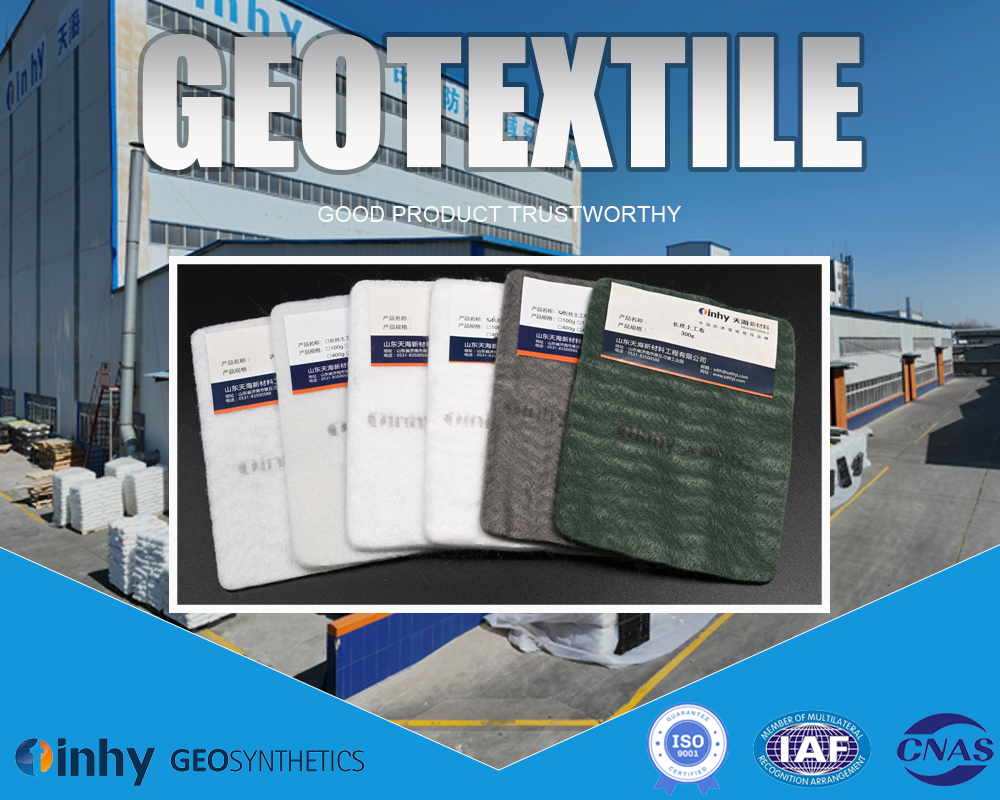How to judge the quality of woven geotextile?
To judge the quality of woven geotextiles, you usually need to consider the following aspects:
Material selection: Appropriate materials should be selected for high-quality woven geotextiles. Commonly used materials include polypropylene (PP), polyester (PET), etc. These materials should have excellent strength, durability and chemical resistance.
Weight and Thickness: The weight and thickness of a woven geotextile directly affects its strength and durability. Better geotextiles usually have a heavier weight and proper thickness to provide better support and tensile strength.
Elongation performance: The elongation performance of woven geotextile is an important indicator to evaluate its flexibility and adaptability. A good geotextile should have a certain degree of extensibility and be able to adapt to the stress and deformation in the project without being easily broken or damaged.
Tear resistance: Tear resistance is an important indicator for evaluating the durability of woven geotextiles. High-quality geotextiles should have high tear resistance, be able to withstand external forces and resist tearing and damage.
Pore size and screening: Woven geotextiles usually have an open pore structure or mesh shape, and the size and screening of these pores play an important role in its filtration performance and anti-seepage performance. High-quality geotextiles should have uniform pore size distribution and proper screening to ensure good filtration and isolation effects.
Chemical resistance: Woven geotextiles are often used in complex environmental conditions, and their chemical resistance should be considered. High-quality geotextiles should have good acid and alkali resistance, corrosion resistance and other properties, and can remain stable in various chemical media.
Supplier Reputation and Certification: Choosing reputable suppliers and manufacturers is also an important factor in judging the quality of woven geotextiles. You can refer to the supplier’s qualifications, product certifications, historical records, user reviews, etc.

Which is better, knitted or woven geotextiles?
There are two types of geotextiles: knitted geotextiles and woven geotextiles. Each has different characteristics and applicability. It is impossible to simply judge which one is better. Instead, the choice must be based on specific application scenarios and needs.
Knitted geotextile: Knitted geotextile is made by interweaving the warp and weft threads of the fabric through knitting needles. It has the following characteristics:
Good softness: Knitted geotextiles are more flexible than woven geotextiles and can adapt well to irregular deformations on the ground surface. They are suitable for some engineering scenarios that require good adaptability.
Good tensile properties: Knitted geotextiles have good elongation properties and can maintain good stability during engineering deformation. They are suitable for occasions with high strength and deformation requirements.
Poor water permeability: Compared with woven geotextiles, knitted geotextiles have poor water permeability and are suitable for some projects that require water blocking and filtration functions.
Woven geotextile: Woven geotextile is made of warp and weft threads directly woven mechanically. It has the following characteristics:
High strength: The strength of woven geotextiles is usually higher than that of knitted geotextiles, and they can withstand larger tensile forces and have better tear resistance.
Good water permeability: Due to the structure of woven geotextile, it has good water permeability and can filter, drain and prevent soil erosion.
Good stability: The woven geotextile has good structural stability and can maintain stable performance for a long time in the project.
Therefore, knitted geotextiles and woven geotextiles are each suitable for different application scenarios. Which type of geotextile to choose should consider specific engineering requirements, such as soil type, engineering stress environment, surface deformation and other factors.
Sometimes, according to specific engineering needs, knitted geotextiles and woven geotextiles are combined to give full play to their respective advantages.
When selecting, it is recommended to consult a professional engineer or consultant based on the actual situation to ensure the correct selection of the appropriate geotextile type.
What types of knitted geotextiles are there?
Knitted geotextiles can be divided into many different types based on different materials and applications. Here are some common types of knitted geotextiles:
Needle-punched nonwoven geotextile: Also known as needle-punched geotextile or needle-punched geotextile, it uses polyester or polypropylene fibers as raw materials and interweaves the fibers through a needle-punching process. It has good tensile strength, water permeability and filtration function, and is suitable for soil slope protection, soil erosion prevention, soil and water conservation and other projects.
Needle-punched composite geotextile: This kind of geotextile is composed of a plastic film sandwiched between two layers of needle-punched geotextile. The interlayer plastic film can enhance the anti-seepage performance of geotextile and provide better waterproof function and isolation effect. It is suitable for water conservancy projects, anti-seepage projects, landfills and other places that require better anti-seepage effects.
Needle-punched composite membrane geotextile: This kind of geotextile is made of polyester fiber and film. The composite membrane layer can provide better barrier properties and prevent soil particles from passing through the geotextile. It is suitable for barrier and anti-seepage projects, such as anti-seepage isolation belts and sewage treatment projects.
Needle-punched fiber geotextile: This kind of geotextile is manufactured using finer needle-punched fibers. It has high softness and adaptability and can adapt to complex surface shapes and deformations. It is suitable for soil reinforcement, roadbed reconstruction, soft foundation treatment and other projects.

